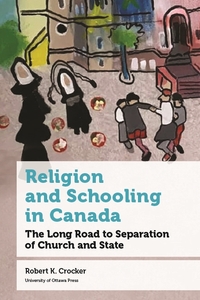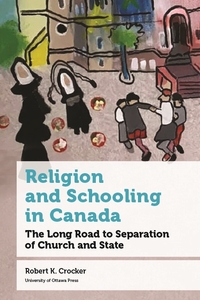
Les organisations chrétiennes ont toujours été impliquées dans l’éducation canadienne. En 1949, cinq provinces comptaient des écoles confessionnelles protégées par la Constitution. Le gouvernement fédéral a essentiellement confié sa responsabilité de l’éducation pour les peuples autochtones aux églises pour plus d’un siècle. Résultat : une histoire de mauvais traitements seulement mise au jour récemment.
Des années 1950 aux années 1970, plusieurs mesures dans diverses provinces ont posé les jalons pour d’importantes réformes en éducation. Certaines testaient les limites des protections confessionnelles, mais ne pouvaient éliminer les structures constitutionnelles sous-jacentes.
Le rapatriement de la Constitution et l’adoption de la Charte des droits et libertés en 1982 ont codifié des changements fondamentaux dans la perception des droits civils. La Charte permettait des remises en question des droits confessionnaux sur plusieurs fronts, mais elles ont toutes été refusées par les tribunaux au motif que la Charte ne peut servir à déroger à d’autres parties de la Constitution.
Dans les années 1990, le mode de révision se présente comme une autre voie vers la réforme. On a recouru à des modifications constitutionnelles pour mettre fin au contrôle confessionnel des écoles à Terre-Neuve et au Québec en 1997 et en 1998.
Les circonstances entourant ces modifications constitutionnelles sont scrutées comme précédents possibles pour obtenir des résultats semblables en Alberta, en Ontario et en Saskatchewan. Cet ouvrage soutient que des changements y sont inévitables et présente plusieurs voies vers la réforme. Cette réforme vise à éliminer la discrimination inhérente dans les établissements confessionnels tout en préservant une participation religieuse dans certaines écoles.
Christian organizations have always played a large role in Canadian education. By 1949, five provinces had constitutionally protected denominational schools. The federal government’s responsibility for the education of Indigenous Peoples was effectively contracted out to the churches for more than a century, resulting in a history of abuse that has only recently come to light.
From the 1950s to the 1970s, several initiatives in different provinces set the stage for significant reforms to education. Some of these tested the limits of denominational protections, but could not shake the underlying constitutional structures.
Patriation of the Constitution and adoption of the Canadian Charter of Rights and Freedoms in 1982 codified fundamental changes in thinking about civil rights. The Charter allowed existing denominational rights to be challenged on many fronts. However, all such challenges were rebuffed by the courts on the grounds that the Charter cannot be used to override other parts of the Constitution.
By the 1990s, it became apparent that another route to reform was available, through the amending formula. Constitutional amendments were used to end denominational control of schools in Newfoundland and Quebec in 1997 and 1998.
The circumstances around those constitutional amendments are discussed in detail as possible precedents for similar outcomes in Alberta, Ontario, and Saskatchewan. This book contends that change will certainly come to these provinces and several paths to reform are explored. This reform aims to remove the discrimination inherent in denominational institutions while preserving some form of religious involvement in certain schools.
Book details
-
Publisher
-
Language
English -
Publication date
-
Theme
-
Series






